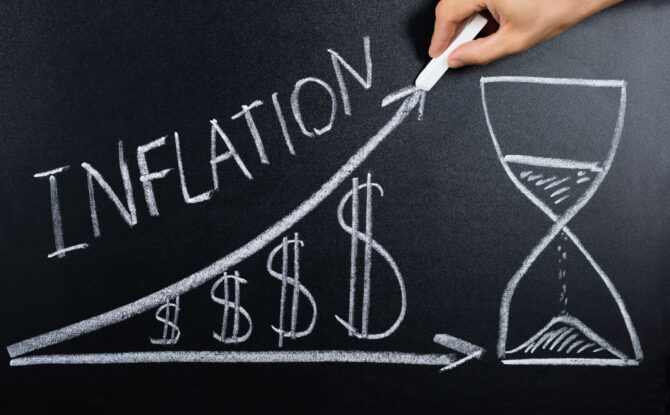
Let’s Address the Financial Literacy Problem.
How much do you know about interest rates, compounding interest, inflation, or risk diversification? Your knowledge of these concepts determines your level of financial literacy. Standard & Poor defines financial literacy as “having the ability to make informed financial choices regarding saving, investing, borrowing, and more” (Klapper 4). The stats are in, and Americans have room to improve when it comes to financial literacy. Rates of financial literacy in the U.S. differ depending on the source, criteria, and year, but Americans’ high rates of debt and low rates of saving and
Indeed, Americans’ financial literacy has declined in recent years: a 2015 study showed that only 37% of Americans could correctly answer four out of five basic financial questions, a 5% decrease since 2009 (Iacurci). When it comes to the S&P’s criteria for financial literacy, as of 2014, only 60% of American adults are financially literate, ranking the U.S. fourteenth globally (Klapper 9). However, these rates aren’t even across the American population. Women, the poor, and the less-educated are more likely to suffer from gaps in financial knowledge (Klapper 5). Race is also a factor, with 39% of blacks and 34% of Latinos using high-cost forms of borrowing like pawn shops, compared with only 21% of whites and Asians (Farber). Though financial literacy is a problem for many Americans, race, education, gender, and socioeconomic status affect financial knowledge.
Financial knowledge can come from multiple sources, and a lack of it can lead to multiple negative outcomes. In certain ways, it’s a vicious cycle. For example, people who use formal financial services like banks often have higher rates of financial literacy (Klapper 5). However, people of lower economic status are less likely to use these services; when you’re living paycheck-to-paycheck, it’s hard to get that extra 2% into a retirement account (Nova). Additionally, though higher school math performance leads to higher rates of financial literacy, this leaves low-income students at under-funded schools at a disadvantage (Klapper 15). As there are only five states in the U.S. that require a high school personal finance course, it seems young people, especially those who are low-income or minorities, don’t have much of a chance to improve their financial knowledge.
There is reason to be optimistic, though; today’s kids show an interest in money matters, and financial experts and educators are stepping in to make a change. A study by Wakefield Junior Achievement and Jackson Charitable Foundation found that 55% of kids were excited when they heard adults talking about money, and 34% felt motivated when they thought about it. Though many schools lack a financial literacy program, 41% of financial advisors are involved in financial literacy initiatives in their community (Kosakowski and Robinson). Since most money behaviors are rooted in childhood experiences, it’s important for parents, educators, and financial professionals to invest in early financial education.
Though the United States’ lags behind other large economies when it comes to financial literacy, the internet is full of resources for financial education. In response to the financial literacy problem, many companies and nonprofits have created financial literacy programs as well. For example, our CEO Glen Wright II supports WTVI PBS Charlotte’s American Graduate 3-D Project, which highlights pathways to success and career exploration for Charlotte-Mecklenburg high school students. For other financial education programs, this document from United States Treasury lists quality resources for educators, students, and the public. No one is born with innate financial knowledge, but with a little motivation and help from educators and financial experts, anyone can achieve financial literacy.
Sources:
- Farber, Madeline. “Nearly Two-Thirds of Americans Can’t Pass a Basic Test of Financial Literacy.” Fortune, Fortune Media, 12 July 2016, fortune.com/2016/07/12/financial-literacy/.
- Iacurci, Greg. “Financial Literacy: An Epic Fail in America.” InvestmentNews, InvestmentNews, 2 Mar. 2019, www.investmentnews.com/article/20190302/FEATURE/190229936/financial-literacy-an-epic-fail-in-america.
- Klapper, Leora, et al. Financial Literacy Around the World: Insights from the Standard & Poor’s Ratings Services Global Financial Literacy Survey. World Bank Development Research Group, 2014, Financial Literacy Around the World: Insights from the Standard & Poor’s Ratings Services Global Financial Literacy Survey.
- Kosakowski, Jack, and Danielle Robinson. “Let’s Make Kids Part of the Financial Literacy Conversation.” Credit Union Times, ALM Media Properties, 2 Apr. 2019, www.cutimes.com/2019/04/02/lets-make-kids-part-of-the-financial-literacy-conversation-413-157150/.
- Nova, Annie. “There Is a Savings Crisis and Many Americans Don’t Know How to Fix It. Here’s How.” CNBC, CNBC, 1 Apr. 2019, www.cnbc.com/2019/03/31/there-is-a-savings-crisis-and-many-americas-dont-know-how-to-fix-it.html.



